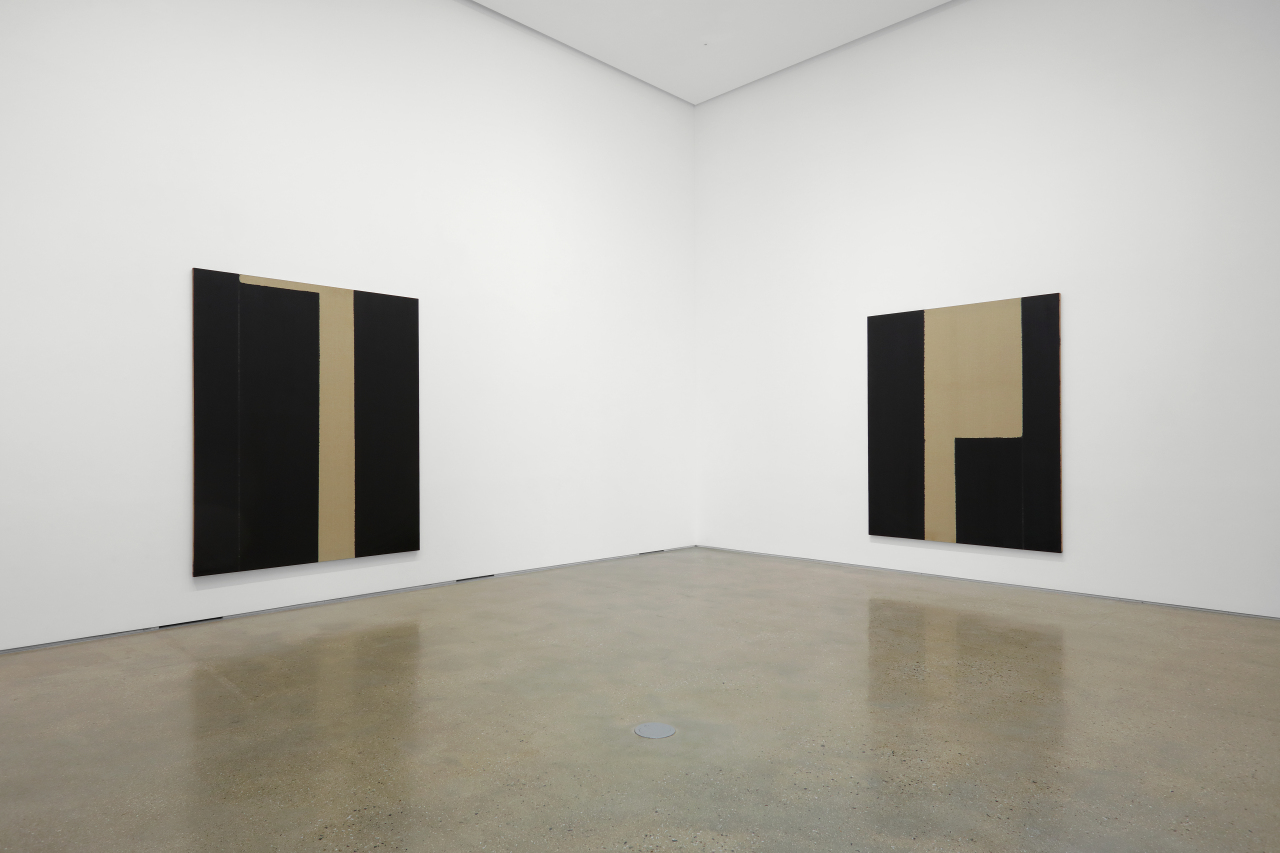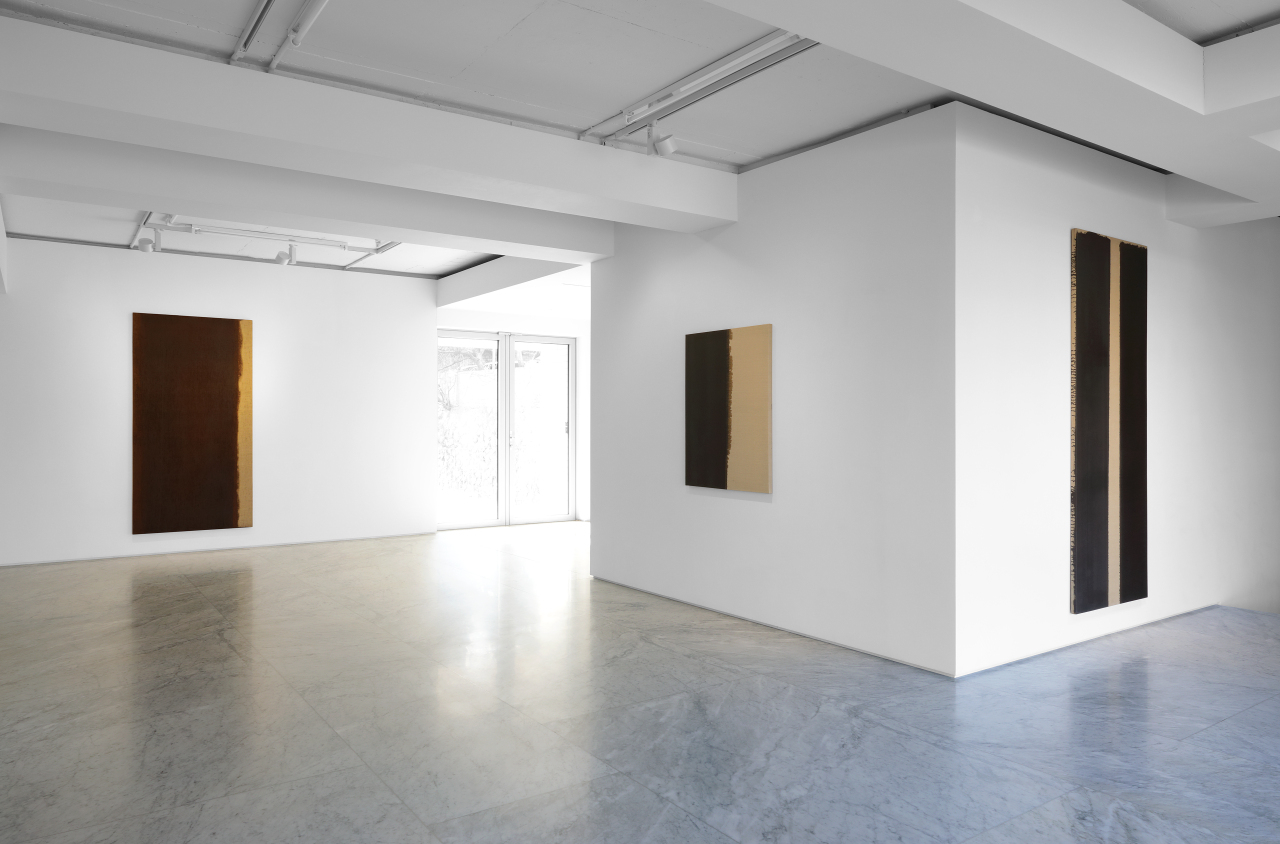Dansaekhwa master Yun Hyong-keun’s late works unveiled in Seoul
Influenced by US minimalist artist Donald Judd, Yun’s later works pursued simpler colors, forms
By Park YunaPublished : April 27, 2020 - 17:29

The late works of Yun Hyong-keun (1928-2007), the master of monochrome painting, or Dansaekhwa, from the late 1980s to 1990s, have been unveiled to the public at PKM Gallery in Seoul. The exhibition is the first that focuses exclusively on the master’s works from his later years.
Titled “Yun Hyong-keun 1989-1999,” the exhibition features 24 paintings from the period. Yun’s works garnered the international spotlight through a retrospective held at Palazzo Fortuny in Venice last year, which coincided with the 2019 Venice Biennale. The retrospective started in 2018 at the National Museum of Modern and Contemporary Art, Korea.
Yun’s works from the 1990s are lesser known compared to his earlier ones, but are worthy of more attention as they show a unique stylistic development, according to Park Kyung-hee, president at PKM Gallery.
“While his early works are characterized by the permeating effect of ink painting and flanking two columns, the later works appear bolder in form and colors,” Park said at a press conference held Wednesday at the galley. “Yun’s works from the late period are particularly meaningful as they absorb both Eastern and Western styles, which Yun developed after being influenced by Donald Judd, an American minimalist artist.”
Exchanges with Judd -- regarded as one of the most significant figures in postwar art -- ignited a change in Yun’s paintings. Yun gradually moved away from the “Gate of Heaven and Earth” series that he had been producing for a decade since the early 1970s, pursuing drastic simplification in terms of color and form after meeting Judd.

Yun first encountered Judd when the American artist held his first solo exhibition in Seoul in 1991. Although Judd never agreed to the word “minimalism” in describing his works, he pursued simplicity in form, color and proportion, which affected Yun’s later works, according to an essay on the exhibition, “Yun Hyong-keun 1989-1999” by Kim In-hye, curator of the MMCA.
Yun and Judd later became friends and influenced each other. Inspired by Yun’s works, Judd also experimented with hanji -- traditional Korean paper made with mulberry -- that he brought back from Korea. Judd also invited Yun to hold a solo exhibition at the Judd Foundation in New York in 1993.
“The exhibition is worth a visit because it is the first that focuses solely on Yun’s late works, which are not well known to people. Some of them are being shown to the public for the first time as they were never displayed even when Yun was alive,” Park said.
The virtual reality exhibition, which will be provided with an audio guide in English, will be available on the gallery’s website starting from May.
Yun Hyong-keun led Korea‘s Dansaekhwa movement. Having lived through the Japanese colonial era, the 1950-53 Korea War and successive authoritarian regimes, Yun expressed his agony, sadness and anger in his monochrome paintings featuring his signature color, burnt umber mixed with blue and dark brown.
Yun’s works are held by such esteemed galleries as the Tate Modern in London, Leeum Samsung Museum of Art in Seoul, Tokyo Metropolitan Art Museum, Chicago Art Institute and M Plus Museum in Hong Kong.
The exhibition at PKM Gallery runs until June 20.
By Park Yuna (yunapark@heraldcorp.com)












![[Today’s K-pop] BTS pop-up event to come to Seoul](http://res.heraldm.com/phpwas/restmb_idxmake.php?idx=644&simg=/content/image/2024/04/17/20240417050734_0.jpg&u=)





![[KH Explains] Hyundai's full hybrid edge to pay off amid slow transition to pure EVs](http://res.heraldm.com/phpwas/restmb_idxmake.php?idx=652&simg=/content/image/2024/04/18/20240418050645_0.jpg&u=20240419100350)

